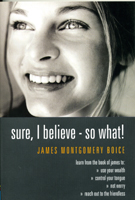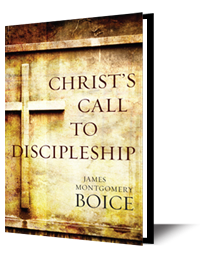A Bible Acrostic, Day 1
Theme: A Hebrew Learning Device
This week’s lessons instruct us of the need to put our trust in God throughout our lives, because he alone will never let us down.
Scripture: Psalm 25:1-22
There is a tendency among commentators to exaggerate the greatness, depth or pathos of any portion of Scripture they are expounding, in this case, for example, calling Psalm 25 "a sob of great sorrow"1 or "the deep soul exercise of the godly remnant of Israel in the time of trouble and distress.”2 I think the tendency is misleading in this case. Psalm 25 is great, but it is great in its calm and quiet maturity. It is not some powerful cry of anguish but rather a thoughtful prayer of one who knows that the only adequate foundation for any worthwhile life is God.
The psalm is in the form of an acrostic. That is, with a few slight variations, each of its verses begins with a successive letter of the Hebrew alphabet, the first word of the first verse beginning with aleph, the first word of the second verse beginning with beth, and so on. This is not an uncommon devise in the psalter. Altogether there are nine such psalms, though the first two make up one full acrostic together. The psalms are 9-10, 25, 34, 37, 111, 112, 119, and 145. The most polished example is Psalm 119. It has 22 stanzas of eight verses each, each stanza featuring one alphabet letter. In this case each verse of each stanza begins with the featured letter. The first eight verses of the psalm begin with aleph, each of the next eight verses begins with beth, and so on throughout the whole psalm to the last eight verses (vv. 169-176), each of which begins with taw. The other acrostic psalms are not so elaborate, nor in every case is the sequence of alphabet letters even complete.
Psalm 25 is not complete. As the text stands, the second rather than the first word of verse 2 begins with beth; waw and qoph are omitted (or are at least questionable); resh is repeated (in vv. 18, 19); and the final verse, which does not fit the pattern and seems instead simply to have been added on, begins with pe.3
Why did the psalmists follow an acrostic pattern? We can think of several reasons: 1) It may be an artistic device used to add a certain beauty to the psalm, as rhyme does in our poetry; 2) It may mean that the subject is being covered completely, from "A" to "Z," as we might say. This is a particularly attractive possibility in regard to Psalm 119 which explores the nature and value of the written Word of God exhaustively; and 3) It may have been a mnemonic device designed to assist the young in learning poetry. In fact, that is probably why many Old Testament passages are poetry itself rather than prose. Poetry is easier than prose to memorize.
Yet in this case at least there may be an additional factor. As soon as we look at the psalm we discover that the theme that ties it all together is "learning," and if that is the emphasis, then an alphabetical or schoolhouse device is particularly appropriate. Notice verses 4 and 5. In them David, who is identified in the title as the psalmist, asks God to "teach" him right paths in which to walk and to "teach" him truth. Other verses contain the same idea but use different words. Then, in verses 8-15, the author confesses that this is precisely what God does. God "instructs sinners in his ways" (v. 8), "teaches the humble his way" (v. 9), and "will instruct the one who fears God in the way chosen for him" (v. 12).
Each of these verses also has to do with guidance. So we could rightly say that the psalm is a school book lesson on how to live so as to please God and be blessed by him.
Study Questions:
- What is an acrostic?
- Why did the psalmists use acrostic patterns? What particular purpose may apply to this psalm?
- What is the basic theme of Psalm 25? List the key words that lead you to that conclusion.
Reflection: Consider the various literary styles, including poetic acrostic, that God has used in giving us his inspired Word, and praise him for it.
1G. Campbell Morgan, Notes on the Psalms (Westwood, NJ: Revell, 1947), p. 51.
2Arno C. Gaebelein, The Book of Psalms: A Devotional and Prophetic Commentary (Neptune, NJ: Loizeaux Brothers, 1965), p. 121.
3This may not be the whole story, however. Although the first word of verse 2 begins with aleph rather than beth, the word involved means "my God" and may actually belong at the end of verse 1, which would then read: "To you, O LORD, I lift up my soul, O my God." If that is a proper handling of the text, then the pattern holds at verse 2 since the second word of the text as it stands does begin with beth. As far as two other variations are concerned, the omission of a verse beginning with waw and the final appended verse beginning with pe, the same pattern is found in Psalm 34, the next of the acrostic poems, which suggests that the pattern is not an error but rather is deliberate. In the case of waw the two psalms may reflect an early form of the Hebrew alphabet.
For Further Study: James Boice’s sermon series on the Psalms is available in paperback, and is a helpful resource for personal or family devotions. Order your copy of the three-volume set and take 25% off the regular price.
Think and Act Biblically from James Boice is a devotional of the Alliance of Confessing Evangelicals. It is supported only by its readers and gracious Christians like you. Please prayerfully consider supporting Think and Act Biblically and the mission of the Alliance.


















